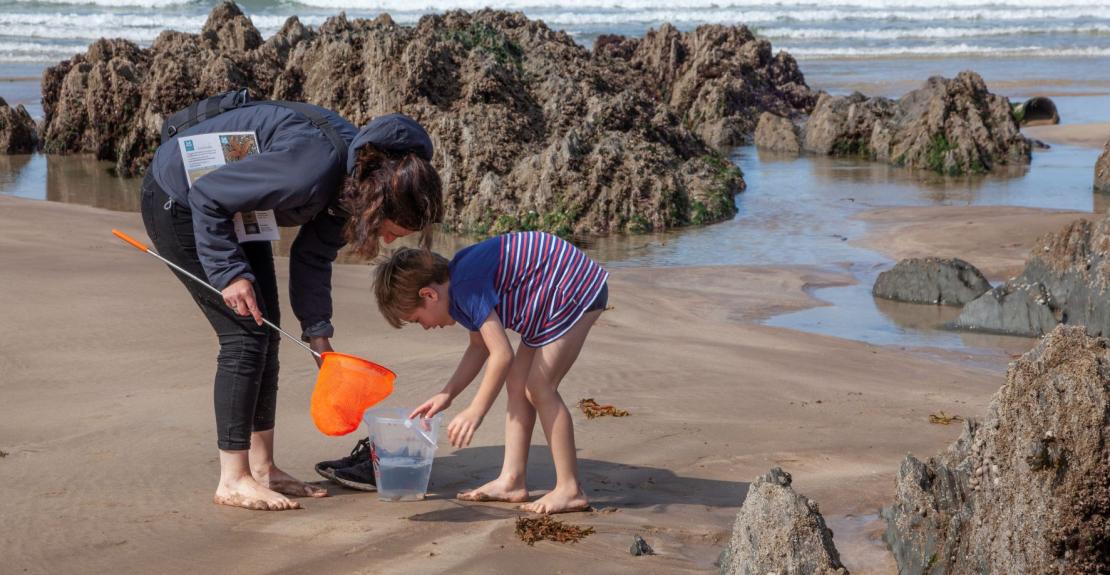
Can you tell your seahares from your starfish?
Join the National Trust Beach Rangers to explore the wonderful rockpools of Combesgate Beach, Woolacombe.
Suitable for all children but those under 14 must be accompanied. Unfortunately dogs are not welcome at this event.
Meet at Combesgate Beach (5 minutes along from Woolacombe Beach, in the direction of Mortehoe). Look out for the National Trust flags at the top of the beach.
Booking Essential - more details to follow.
Rockpool Rambles can only take place at low tide, hence sometimes there can be several days in between events.
What might you find in a rockpool?
Rockpools are filled with many interesting creatures, here's just a few you might spot:
Crabs
Crabs have five pairs of legs (the first pair are known as the claws). Crabs are omnivores (eats both plants and animals) and some feed primarily on algae, others feed on mollusks, worms, crustaceans, fungi, bacteria, and organic non-living material.
Starfish
Starfish move using tube feet, which consists of hundreds projections on the underside of their bodies. They are used for walking and catching of the prey. Starfish do not have a brain. They also do not have blood like other animals.
Sea Anemones
A sea anemone is a predatory invertebrate with no bones that lives underwater and looks like a flower. They tend to stick to firm objects in the ocean or sea, and wait for marine life to pass by to catch with their tentacles. Some of the sea anemone species can live as long as 50 years.
Barnacles
There are around 1220 species of barnacle that can be found in the oceans around the world. Most species reside in the shallow coastal areas (few species can be found in deeper parts of the sea). Barnacles have appeared on the planet 510 million years ago and they haven't changed much since that time.
£3 per person, including accompanying adults.
Booking Essential - Call 0344 249 1895
Photo Credit: National Trust